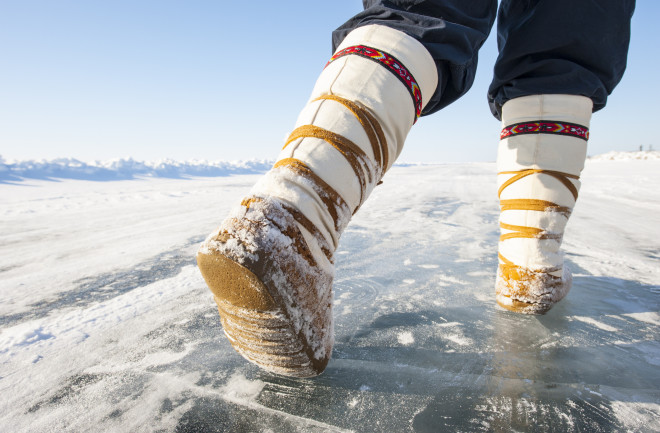Editor's Note: This story from our archives uses the dated term "Eskimo" to collectively refer to far-northern indigenous peoples: "Inupiat and the Yupiks of Alaska, the Canadian Inuit and Inuvialuit, Inuit Greenlanders, and the Siberian Yupiks." It has been edited to remove exclusionary language that "othered" these Native peoples.
Patricia Cochran, an Inupiat from Northwestern Alaska, is talking about the native foods of her childhood: “We pretty much had a subsistence way of life. Our food supply was right outside our front door. We did our hunting and foraging on the Seward Peninsula and along the Bering Sea.
“Our meat was seal and walrus, marine mammals that live in cold water and have lots of fat. We used seal oil for our cooking and as a dipping sauce for food. We had moose, caribou, and reindeer. We hunted ducks, geese, and little land birds like quail, called ptarmigan. We caught crab and lots of fish — salmon, whitefish, tomcod, pike, and char. Our fish were cooked, dried, smoked, or frozen. We ate frozen raw whitefish, sliced thin. The elders liked stinkfish, fish buried in seal bags or cans in the tundra and left to ferment. And fermented seal flipper, they liked that too.”
Cochran’s family also received shipments of whale meat from kin living farther north, near Barrow. Beluga was one she liked; raw muktuk, which is whale skin with its underlying blubber, she definitely did not. “To me it has a chew-on-a-tire consistency,” she says, “but to many people it’s a mainstay.” In the short subarctic summers, the family searched for roots and greens and, best of all from a child’s point of view, wild blueberries, crowberries, or salmonberries, which her aunts would mix with whipped fat to make a special treat called akutuq — in colloquial English, Eskimo ice cream.

